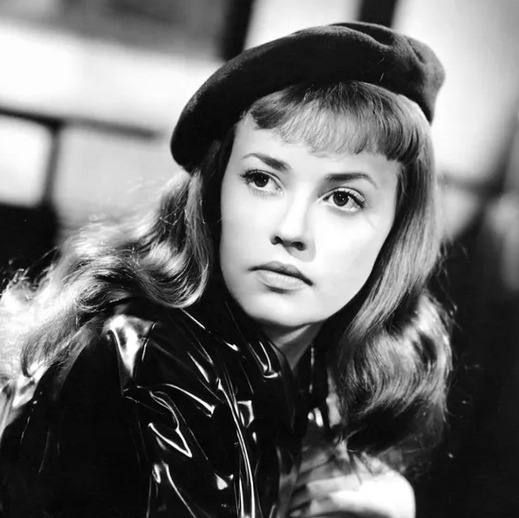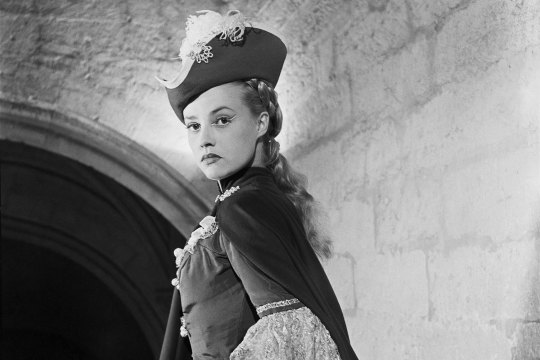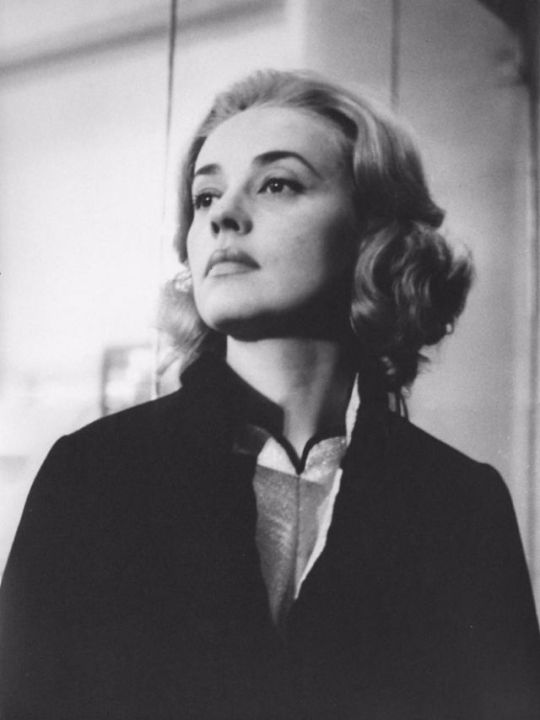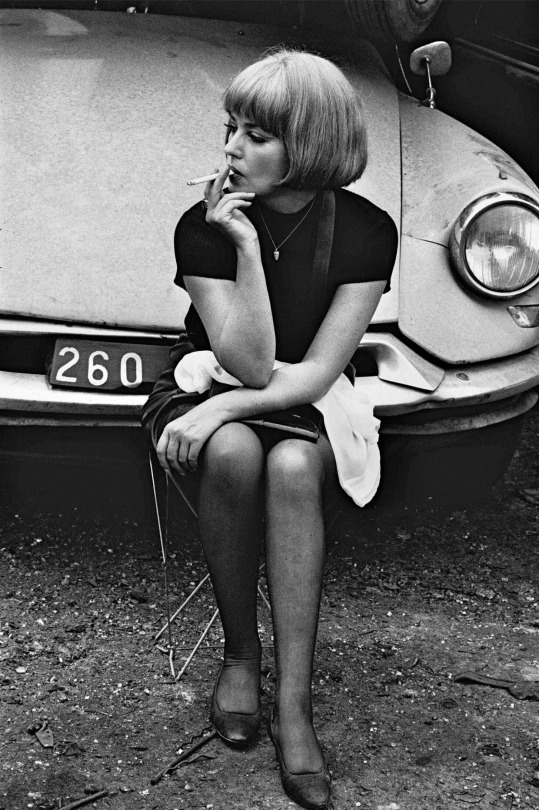#françois civil my beloved
Text
i am falling so fast in the musketeer fandom send help whump fic recs
#i seriously can't function normally today#the me myself and i tag#the dumas tag#the bromance is so perfect#the 2023 movie?????#is so pretty?????#françois civil my beloved#vincent cassel my beloved#but seriously they're the OG found family/team as family#1600s FIELD MEDICINE EXCUSE ME#hyperfixation of the day
0 notes
Text


Propaganda
Jeanne Moreau (Jules et Jim, Elevator to the Gallows, The Night)—Oh my. What a career! She's worked with directors from all over the world! Luis Buñuel, Tony Richardson, Bertrand Blier, Elia Kazan, André Téchiné, Rainer Werner Fassbinder, Wim Wenders, Amos Gitai, Theo Angelopoulos, Michelangelo Antonioni, Orson Welles, Jacques Demy, Joseph Losey, François Truffaut... She played good and she played evil, Machiavellian and sweet, she could do it all. She's magnetic, her mouth is sensual, her gaze direct and demanding, she's absolutely unforgettable. […] Iconic Jules & Jim scene where she's singing; I picked a link with English subtitles. […] What can I say? She's an ICON, pure and simple. [editor’s note: this was very good propaganda but I had to remove a large amount of it because it discussed her post-1970 career. Please keep your propaganda to items within our window of 1910-1970!]
Abbey Lincoln (Nothing but a Man, For Love of Ivy)—abbey lincoln was an actress, jazz vocalist, songwriter, and civil rights activist; in her acting career she's most noted for starring in nothing but a man, an independent drama about a black couple navigating life in a small town that's been called an important example of american neorealism, and for love of ivy, a romantic comedy co-starring sidney poitier
This is round 2 of the tournament. All other polls in this bracket can be found here. Please reblog with further support of your beloved hot sexy vintage woman.
[additional propaganda submitted under the cut.]
Abbey Lincoln propaganda:
link to nothing but a man trailer [editor's note: TW for N-word slur]
youtube


she also appears as herself in the girl can't help it:
youtube
Jeanne Moreau:





150 notes
·
View notes
Text
here’s my giant leftist to-read list for the next few years!!!
if a little (done!) it written next to the book, it means i’ve finished it! i’m gonna try to update this as i read but no promises on remembering haha
Economics/Politics
Property by Karl Marx
Communist Manifesto by Karl Marx (done!)
Wages, Price, and Profit by Karl Marx (done!)
Wage-Labor and Capital by Karl Marx (done!)
Capital Volume I by Karl Marx
The 1844 Manuscripts by Karl Marx
Socialism: Utopian and Scientific by Fredrich Engles
Synopsis of Capital by Fredrich Engels
The Principles of Communism by Fredrich Engles
Imperialism, The Highest Stage Of Capitalism by Vladmir Lenin
The State And Revolution by Vladmir Lenin
The Revolution Betrayed by Leon Trotsky
Fascism: What is it and How to Fight it by Leon Trotsky
In Defense Of Marxism by Leon Trotsky
The Accumulation of Capital by Rosa Luxemborg
Reform or Revolution by Rosa Luxemburg
Discipline and Punish by Michel Foucault
The Conquest of Bread by Peter Kropotkin
On Anarchism by Noam Chomsky
Profit over People by Noam Chomsky
An Introduction to Marxist Economic Theory by Ernest Mandel
The Affluent Society by John Kenneth Galbraith
The Postmodern Condition by Jean François Lyotard
Capitalist Realism by Mark Fisher
The Socialist Reconstruction of Society by Daniel De Leon
Anarchism and Other Essays by Emma Goldman
Socialism Made Easy by James Connolly
Race
Biased: Uncover in the Hidden Prejudice That Shapes What We See, Think, and Do
Blindspot by Mahzarin R. Banaji
Racism Without Racists: Color-blind Racism And The Persistence Of Racial Inequality In America by Eduardo Bonilla-Silva
How To Be Less Stupid About Race: On Racism, White Supremacy And The Racial Divide by Crystal M. Flemming
This Book is Anti-Racist: 20 Lessons on How To Wake Up, Take Action, And Do The Work by Tiffany Jewell & Aurelia Durand
The Next American Revolution: Sustainable Activism For The Twenty-First Century by Grace Lee Boggs
Tell Me Who You Are by Winona Guo & Priya Vulchi
The Fire This Time: A New Generation Speaks About Race by Jesymn Ward
Class, Race, and Marxism by David R. Roediger
America for Americans: A History Of Xenophobia In The United States by Erica Lee
The Politics Of The Veil by Joan Wallach Scott
A Different Mirror A History Of Multicultural America by Ronald Takaki
A People’s History Of The United States by Howard Zinn
Black Theory
The Wretched Of The World by Frantz Fanon
Black Marxism by Cedric J Robinson
Malcolm X Speaks by Malcolm X
Women, Culture, and Politics by Angela Davis
Women, Race, & Class by Angela Davis (done!)
Freedom is a Constant Struggle by Angela Davis (done!)
The Meaning of Freedom by Angela Davis
Sister Outsider by Audre Lorde
Ain’t I A Woman? by Bell Hooks
Yearning by Bell Hooks
Dora Santana’s Works
An End To The Neglect Of The Problems Of The Negro Women by Claudia Jones
I Am Your Sister by Audre Lorde
Women’s Liberation And The African Freedom Struggle by Thomas Sankara
W.E.B. DuBois Essay Collection
Black Reconstruction by W.E.B. DuBois
Lynch Law by Ida B. Wells
The Bluest Eye by Toni Morrison
Sula by Toni Morrison
Song Of Solomon by Toni Morrison
Beloved by Toni Morrison
Paradise by Toni Morrison
A Mercy by Toni Morrison
This Bridge Called My Back by Cherríe Moraga
Stamped from the Beginning: The Definitive History of Racist Ideas in America
So You Want to Talk About Race by Ijeoma Oluo
The New Jim Crow: Mass Incarceration in the Age of Colorblindness by Michelle Alexander
Black Feminist Thought by Patricia Hill Collins
Eloquent Rage: A Black Feminist Discovers Her Superpower by Dr. Brittney Cooper
I Know Why the Caged Bird Sings by Maya Angelou
Black Skins, White Masks and The Wretched of the Earth by Frantz Fanon
Killing of the Black Body
Revolutionary Suicide by Huey P Newton
Settlers; The myth of the White Proletariat
Fearing The Black Body; The Racial Origins of Fatphobia
Freedom Dreams; The Black Radical Imagination
How Capitalism Underdeveloped Black America
How Europe Underdeveloped Africa
An Argument For Black Women’s Liberation As a Revolutionary Force by Mary Anne Weathers
Voices of Feminism Oral History Project by Frances Beal
Ghosts In The Schoolyard: Racism And School Closings On Chicago’s South Side by Eve L. Ewing
Tears We Cannot Stop: A Sermon To White America by Michael Eric Dyson
Why We Can’t Wait by Martin Luther King, Jr.
Fatal Invention: How Science, Politics, Big Business, Re-create Race In The 21st Century by Dorothy Roberts
We Gon’ Be Alright: Notes on Race & Resegregation by Jeff Chang
They Can’t Kill Us All: Ferguson, Baltimore, and a New Era In America’s Racial Justice Movement by Wesley Lowery
The Common Wind by Julius S. Scott
Black Is The Body: Stories From My Grandmother’s Time, My Mother’s Time, And Mine by Emily Bernard
We Were Eight Years In Power: An American Tragedy by Ta-Nehisi Coates
American Lynching by Ashraf H. A. Rushdy
Raising Our Hands by Jenna Arnold
Redefining Realness by Janet Mock
When Affirmative Action Was White: An Untold History of Racial Inequality in Twentieth-Century America by Ira Katznelson
Whistling Vivaldi: How Stereotypes Affects Us and What We Can Do
Citizen: An American Lyric by Claudia Rankine
Left of Karl Marx: The Political Life Of Black Communist Claudia Jones by Carole Boyce Davies
Black Studies Manifesto by Darlene Clark
The Hate U Give by Angie Thomas
The Souls Of Black Folk by W.E.B. Du Bois
Darkwater by W.E.B. Du Bois
The Education Of Blacks In The South, 1860-1935 by James D. Anderson
The Half Has Never Been Told: Slavery And The Making Of American Capitalism by Edward E. Baptist
The Color Of Money: Black Banks And The Racial Wealth Gap by Mehrsa Baradaran
A Black Women’s History Of The United States by Daina Ramey Berry & Kali Nicole Gross
The Price For Their Pound Of Flesh: The Value Of The Enslaved, From Womb to Grave, In The Building Of A Nation by Daina Ramey Berry
North Of Slavery: The Negro In The Free States, 1780-1869 by Leon F. Litwack
Black Stats: African Americans By The Numbers In The Twenty-First Century by Monique M. Morris
Pushout: The Criminalization of Black Girls in Schools by Monique M. Morris
40 Million Dollar Slaves: The Rise, Fall, And Redemption of The Black Athlete by William C. Rhoden
From #BlackLivesMatter To Black Liberation by Keeanga-Yamahtta Taylor
A More Beautiful And Terrible History: The Uses And Misuses Of Civil Rights History by Jeanne Theoharis
Medical Apartheid: The Dark History Of Medical Experimentation On Black Americans From Colonial Times To The Present by Harriet A. Washington
Working At The Intersections: A Black Feminist Disability Framework” by Moya Bailey
Theory by Dionne Brand
Black Women, Writing, And Identity by Carole Boyce Davies
Slavery By Another Name: The Re-enslavement Of Black Americans From The Civil War To World War II by Douglass A. Blackmon
Black Like Me by John Howard Griffin
The Fire Next Time by James Baldwin
Some Of Us Are Very Hungry Now by Andre Perry
The Origins Of The Urban Crisis: Race and Inequality In Postwar Detroit by Thomas Surgue
They Can’t Kill Us Until They Kill Us by Hanif Abdurraqib
Beyond Containment: Autobiographical Reflections, Essays and Poems by Claudia Jones
The Black Woman: An Anthology by Toni McCade
Double Jeopardy: To Be Black and Female by Frances Beal
How We Get Free: Black Feminism and the Combahee River Collective by Keeanga-Yamahtta Taylor
Indigenous Theory
Colonize This! by Daisy Hernandez and Bushra Rehman
As We Have Always Done
Braiding Sweetgrass
Spaces Between Us
The Sacred Hoop by Paula Gunn Allen
Native: Identity, Belonging, And Rediscovering God by Kaitlin Curtice
An Indigenous People’s History Of The United States by Roxanne Dunbar-Ortiz
Why Indigenous Literatures Matter by Daniel Heath Justice
Highway of Tears: A True Story of Racism, Indifference, And The Pursuit Of Justice For Missing And Murdered Indigenous Women and Girls by Jessica McDiarmid
The Other Slavery by Andrés Reséndez
Seven Fallen Feathers by Tanya Talaga
All Our Relations: Indigenous Trauma In The Shadow Of Colonialism by Tanya Talaga
All Our Relations: Finding The Path Forward by Tanya Talaga
Everything You Wanted To Know About Indians But Were Afraid To Ask by Anton Treuer
Rez Life: An Indian’s Journey Through Reservation Life by David Treuer
Latine Theory
Borderlands/La Frontera by Gloria Anzaldúa
Open Veins of Latin America: Five Centuries of Pillage of A Continent by Eduardo Galeano
Inventing Latinos: A New Story of American Racism by Laura E. Gomez
De Colores Means All Of Us by Elizabeth Martinez
Middle Eastern And Muslim Theory
How Does It Feel To Be A Problem? Being Young And Arab In America by Moustafa Bayoumi
We Too Sing America: South Asian, Arab, Muslim, and Sikh Immigrants Shape Our Multiracial Future by Deepa Iyer
Alligator and Other Stories by Dima Alzayat
API Theory
Orientalism by Edward Said
The Making Of Asian America by Erika Lee
On Gold Mountain by Lisa See
Strangers From A Different Shore: A History of Asian Americans by Ronald Takaki
They Called Us Enemy (Graphic Novel) by George Takei
Yellow Peril!: An Archive of Anti-Asian Fear by Edited by John Kuo Wei Tchen and Dylan Yeats
Yellow: Race In America Beyond Black And White by Frank H. Wu
Alien Nation: Chinese Migration In The Americas From The Coolie Era Through World War II by Elliott Young
The Good Immigrants: How The Yellow Peril Became The Model Minorities by Madeline H. Ysu
Asian American Dreams: The Emergence Of An American People by Helen Zia
The Myth Of The Model Minority: Asian Americans Facing Racism by Rosalind S. Chou & Joe R. Feagin
Two Faces Of Exclusion: The Untold Story Of Anti-Asian Racism In The United States by Lon Kurashige
Whiteness
White Fragility by Robin Di Angelo (done!)
White Kids: Growing Up With Privilege In A Racially Divided America by Margaret A. Hagerman
Waking Up White by Deby Irving
The History of White People by Nell Irvin Painter
White Like Me: Reflections On Race From A Privileged Son by Tim Wise
White Rage by Carol Anderson
What Does It Mean To Be White: Developing White Racial Literacy by Robin DiAngelo
The Invention of The White Race: Volume 1: Racial Oppression and Social Control by Theodore W. Allen
The Invention of The White Race: Volume 2: The Origin of Racial Oppression in Anglo-America by Theodore W. Allen
Immigration
Call Me American by Abdi Nor Iftir
Create Dangerously: The Immigrant Artist At Work by Edwidge Danticat
My Family Divided by Diane Guerrero
The Devil’s Highway: A True Story by Luis Alberto Urrea
The Undocumented Americans by Karla Cornejo Villavicencio
Enrique’s Journey by Sonia Nazario
Tell Me How It Ends: An Essay In Forty Questions by Valeria Luiselli
Voter Suppression
One Person, No Vote: How Voter Suppression Is Destroying Our Democracy by Carol Anderson
Give Us The Vote: The Modern Struggle For Voting Rights In America by Ari Berman
Prison Abolition And Police Violence
Abolition Democracy by Angela Davis
Are Prisons Obsolete? by Angela Davis
The Prison Industrial Complex by Angela Davis
Political Prisoners, Prisons, And Black Liberation by Angela Davis
Just Mercy by Bryan Stevenson (done!)
The End Of Policing by Alex S Vitale
Invisible No More: Police Violence Against Black Women and Women of Color by Andrea J. Ritchie
Choke Hold: Policing Black Men by Paul Butler
From The War On Poverty To The War On Crime: The Making Of Mass Incarceration In America by Elizabeth Hinton
Feminist Theory
The Second Sex by Simone de Beauvoir
A Vindication of the Rights of Women by Mary Wollstonecraft
Bad Feminist by Roxanne Gay
7 Feminist And Gender Theories
Race, Gender, And Class by Margaret L. Anderson
African Gender Studies by Oyèrónkẹ́ Oyěwùmí
The Invention Of Women by Oyèrónkẹ́ Oyěwùmí
What Gender Is Motherhood? by Oyèrónkẹ́ Oyěwùmí
Feminism Without Borders: Decolonizing Theory, Practicing Solidarity by Chandra Talpade Mohanty
I Am Malala by Malala Youssef
LGBT Theory
Gender Trouble by Judith Butler
Performative Acts and Gender Constitution by Judith Butler
Imitation and Gender Insubordination by Judith Butler
Bodies That Matter by Judith Butler
Excitable Speech by Judith Butler
Undoing Gender by Judith Butler
The Roots Of Lesbian And Gay Opression: A Marxist View by Bob McCubbin
Compulsory Heterosexuality And Lesbian Existence by Adrienne Rich
Decolonizing Trans/Gender 101 by B. Binohan
Gay.Inc: The Nonprofitization of Queer Politics by Merl Beam
Pronouns Good or Bad: Attitudes and Relationships with Gendered Pronouns
Transgender Warriors
Whipping Girl; A Transsexual Woman on Sexism and the Scapegoating of Femininity
Stone Butch Blues by Lesie Feinberg (done!)
The Stonewall Reader by Edmund White
Sissy by Jacob Tobia
Gender Outlaw by Kate Bornstein
Butch Queens Up In Pumps by Marlon M. Bailey
Black On Both Sides: A Racial History Of Trans Identities by C Riley Snorton
Go Tell It On The Mountain by James Baldwin
Ezili’s Mirrors: Imagining Black Queer Genders by Omise’eke Natasha Tinsley
Lavender and Red by Emily K. Hobson
150 notes
·
View notes
Text
François Clemmons

François Scarborough Clemmons (born April 23, 1945) is an American singer, actor, playwright and university lecturer. He is perhaps best known for his appearances as "Officer Clemmons" on the PBS television series Mister Rogers' Neighborhood from 1968 to 1993.
Early life and education
Clemmons was born in Birmingham, Alabama and raised in Youngstown, Ohio. When it was discovered that he had an excellent singing voice, he began performing locally at church functions. He became choir director of his church at the age of 10. His first songs were the spirituals of pre-Civil War America, passed down to him by his mother. He soon branched out across genres, singing with various community groups. For a while, he was the lead singer of a rock 'n' roll group called the Jokers.
Clemmons received a Bachelor of Music degree from Oberlin College, and a Master of Fine Arts from Carnegie Mellon University. He also received an honorary degree of Doctor of Arts from Middlebury College.
Metropolitan Opera
In 1968, Clemmons won the Metropolitan Opera auditions in Pittsburgh, Pennsylvania. He went on to Cleveland, Ohio, where he won a position in the Metropolitan Opera Studio. He sang there professionally for seven seasons, performing over 70 roles with companies including The New York City Opera, Los Angeles Civic Light Opera, and Washington Civic Opera.
Clemmons sang with numerous orchestras, including the Cleveland Orchestra, the Pittsburgh Symphony Orchestra, and the Philadelphia Orchestra. In 1976, he won a Grammy Award for a recording of Porgy and Bess; he performed the role of "Sportin' Life" in that musical over 100 times.
Mister Rogers' Neighborhood
For 25 years, Clemmons performed the role of Officer Clemmons, a friendly neighborhood policeman, in the "Neighborhood of Make-Believe" on the children's television show Mister Rogers' Neighborhood. In the neighborhood itself, Clemmons ran a singing and dance studio located in the building diagonally across the street from Mister Rogers' house. He was one of the first African Americans to have a recurring role on a kids' TV series, and his presentation – as both a beloved neighbor to Mister Rogers and as a respected authority figure – has been described as a ground-breaking message in race relations. Clemmons told the story of how he became "Officer Clemmons" on StoryCorps.
The Harlem Spiritual Ensemble
In the late 1980s, Clemmons had an experience singing spirituals with a friend that left him profoundly moved. The experience led him away from operatic performance toward an earlier love: traditional spirituals:
I was enjoying the singing of these spirituals .... I was giving artistry in a way – I was giving my art in a way that I had not felt it was so important as when I was singing Mozart – or when I was singing Schubert – or Donizetti or Bellini .... I began to ask Fred Rogers why there was no professional ensemble that sang spirituals comparable to a Haydn Society or a St. Cecelia Society or a Handel Society or Bach.
When he was unable to find a society like the one he envisioned, Clemmons decided to create one: The Harlem Spiritual Ensemble was dedicated to preserving the American Negro Spiritual.
Middlebury College
From 1997 until his retirement in 2013, Clemmons was the Alexander Twilight Artist in Residence and director of the Martin Luther King Spiritual Choir at Middlebury College in Middlebury, Vermont. He "played the role of professor, choirmaster, resident vocal soloist, advisor, confidant, and community cheerleader". He is also well known in the Middlebury community for his superb rendition of the Star Spangled Banner, which he sings at the Middlebury College men's basketball games.
Writing and arranging
Clemmons actively writes across genres for a variety of age groups. Currently, he is writing his autobiography entitled DivaMan: My Life in Song, a children's story entitled ButterCup and the Majic Cane, and a volume of poetry entitled A Place Of My Own. Some of his published works include a volume of spirituals named Songs for Today and a stage musical called My Name Is Hayes based on the life of Roland Hayes. He also commissioned a choral work composed of spirituals entitled Changed My Name, arranged by Linda Twine.
Personal life
While attending Oberlin College, Clemmons realized that he was gay, but remained closeted, fearing disapproval from his religious family and the community. In 1968, Fred Rogers told Clemmons that while his sexuality did not matter to him personally, Clemmons could not be "out" and continue appearing on Mister Rogers' Neighborhood, because of the scandal that would arise. In the late 1960s, Rogers and others suggested that Clemmons get married as a way to deal with his sexual orientation, which he did. His marriage to wife Carol did not work out, and Clemmons divorced in 1974 so that he could live openly as a gay man. Rogers remained personally supportive of Clemmons, but required him to avoid any indication of his homosexuality – such as the earring he began to wear as a signifier – on the program.
Clemmons lives and works in Middlebury, Vermont, where he is the Emeritus Artist in Residence of Middlebury College. He is a member of Phi Mu Alpha Sinfonia, the national fraternity for men in music.
1 note
·
View note
Text
Speech by Minister of State for Europe Michael Roth at the opening of the Gotha exhibition of French masterpieces from Russia
Speech by Minister of State for Europe Michael Roth at the opening of the Gotha exhibition of French masterpieces from Russia
-- Translation of advance text --
Mr Mayor,
Ms Taubert,
Mr Shvydkoy,
Ms Loshak,
Professor Eberle,
Excellencies,
Ambassador Grinin,
Ambassador Etienne,
Honoured guests,
When preparing for this event, my mind was drawn to two questions in particular: Are art exhibitions like this one here in Gotha really a continuation of politics by other means? And can we learn anything for today from the art of bygone times?
Our relationship with Russia is currently experiencing some turbulence. Trust in Russia has been eroded by the illegal annexation of Crimea, the destabilisation of eastern Ukraine, the measures taken to suppress criticism and the barbaric attacks on homosexuals in Chechnya. But it’s also clear that we are ready to reach out to each other again as soon as there is a basis on which to do so. We need each other. Especially now. The world yearns for greater peace, stability and security. But that we can only deliver if we work together.
In the midst of these political difficulties, this wonderful art exhibition gives us the chance to focus on a long‑standing trust‑based German-Russian partnership – the collaboration between the Friedenstein Castle Foundation in Gotha and the Pushkin State Museum of Fine Arts in Moscow. This collaboration has not only made it possible for some of the French masterpieces on display here to be shown for the first time outside of Russia, but last year it also resulted in a Cranach exhibition in Moscow, which brought together works from Gotha’s Cranach collection with pieces that had been removed at the end of the Second World War. It was the first such exhibition ever to be held in Moscow or elsewhere and it met with overwhelming interest.
For Germany and Russia alike, the loss of cultural property has been a painful wound in our cultural identity. At the opening of the Moscow exhibition you, Professor Shvydkoy, expressed your hope that such joint projects would prepare the ground for talking about more difficult issues. I can only endorse this hope!
Yesterday, Cranach in Moscow – and today French masterpieces in Gotha. Both exhibitions are part of our endeavour to keep the dialogue between us alive in these politically strained times. Let us counteract this growing alienation first and foremost by strengthening and revitalising civil society exchange. Art and culture create human relationships. They help us understand each other better. They aren’t the cherry on the cake but the yeast in the dough.
For this reason, too, “inspiring people” is the slogan of our cultural relations and education policy. We want to inspire people across borders – for example through our numerous fellowship and residency programmes and our youth exchange programmes. Our cultural relations and education policy does not avert its eyes from critical social issues. Far from it. It takes sides. It takes the side of humanity, respect, diversity and artistic freedom. We want to be diverse without fear. Everywhere.
Only by meeting and exchanging ideas with other people can we create an environment that provides the scope for intellectual flexibility and development, fosters understanding and empathy, and breaks down prejudices. It is the job of cultural relations to create space for intellectual exchange and for the forming of emotional bonds. That’s what this project in Gotha is about as well.
It is the lifeblood of our societies. Culture has always been and will remain a “motor” of social processes. It is with this in mind that we also support projects to expand civil society exchange with Russia and eastern European countries.
We should also take the contemplation of art as an opportunity to see things from another perspective. That can certainly be of particular advantage in politics. As Paul Klee said in 1920, art does not reproduce what we see; rather it makes us see. Art is thus also a mirror of its time. Portraits have assumed a central place both in the Cranach exhibition in Moscow and in this show of French masterpieces in Gotha. In the 15th century, the genre of portraiture was becoming fashionable in the Italian city states, but it was still revolutionary. It put the individual in the focus of art and politics.
But portraits also remained a depiction of power, dominion, and political or economic importance, as was brought home to us by Cranach in particular with his many portraits of Luther.
Martin Luther and his wife Katharina von Bora were the first commoners in Germany to be painted in this style. To hang pictures of them on your own four walls was a courageous sign of support for the Reformation. Portraits from the Cranach workshop thus played a similarly central role in the success of the Reformation as Gutenberg’s printing press had done 50 years earlier. This development has been shown to great effect in the two major exhibitions in the United States which the Federal Foreign Office has helped fund. Interest was huge.
The German Cultural Forum for Eastern Europe is currently responsible for a total of seven touring exhibitions which show just what far‑reaching political, religious and social effects the Reformation had in eastern Europe and even in Russia.
The French masters on show here – like Cranach many years before them – produced works commissioned by aristocrats at their courts, and so continued the tradition of portrait painting. However, their paintings also reveal how, following the Reformation and the rise of Absolutism in European capitals from Paris to Moscow in the 16th to 18th centuries, even more emphasis was laid on symbols of power.
What we see here today is thus in a sense the passion for art and collecting of a powerful pan‑European aristocratic elite. They defined themselves primarily through their noble lineage and their claims of dominion, and far less through their language or culture or that of their subjects.
For example, the exhibition includes portraits by François‑Lois Drouais and Jean‑Marc Nattier of Princess Ekaterina Golitsyna and Prince Dimitri Golitsyn. Their close relative, Princess Natalya Golitsyna, had a great fondness for card games and was the inspiration for Pushkin’s eponymous figure “The Queen of Spades” in the short story published in 1834, when she was still alive.
In the story, Hermann’s avarice leads to his betrayal of his beloved and the death of the Queen of Spades, but he is intoxicated by his belief in the magic power he has thereby gained which will guarantee that he triumphs in any card game. But then he makes a mistake at the crucial moment – and loses everything.
What a warning this is to the rulers and chancers of the modern world with their inflated egos! Especially since the Prince Golitsyn pictured in the portrait played a key role in the negotiations on the first partition of Poland. He embodies the aristocratic imperial ambitions of his time.
The artworks however also presage the fundamental shift which saw the decline of the noble houses of Europe in the second half of the 19th century and ushered in the age of nation states based on liberal or conservative values.
The aforementioned Prince Golitsyn is also remembered for founding Golitsyn Hospital in Moscow with his own money, and for leaving a large part of his inheritance to the institution.
Later on, members of the Golitsyn family and, from 1828 to 1853, the German doctor Friedrich Haas, known as the “holy doctor of Moscow”, worked in this very hospital. They worked together to humanise Russia’s penal system. The Golitsyn portrait thus also depicts one of the first protagonists of fledgling civil society engagement and an enabler of German-Russian cooperation. It is thus of unexpected relevance to us today! What a role model! And what a contrast to Golitsyn’s role in the partition of Poland.
In the early 20th century, irresponsible aristocratic elites and aggressive nationalism drew Europe into the cataclysm of the First World War. The deaths and deprivations this entailed swept the German and Russian royal families from the political stage, paving the way for the Russian Revolution of February-March and October-November 1917, and the November Revolution of 1918 and the creation of the Weimar Republic.
Konstantin Stanislavski, who co‑founded the Moscow Art Theatre company in 1898, once said: “Love the art in yourself, not yourself in the art!” In an era when digitally filtered selfies are “advancing” portrait art in a highly ambivalent manner, questions about the place humans assume in society, in a world shaped by advancing globalisation and digitalisation, are still very topical. Portraiture remains a mirror of its time. Today, as it was in Cranach’s time.
A big thank you to the organisers of today’s exhibition! I wish all those active in the Russian-German dialogue on art and culture all the best – may you have lots of good ideas and pursue meaningful projects. Dialogue not speechlessness, exchange not isolation, inspiration not desolation, freedom not oppression, courage not resignation – that’s what I wish for us all. And so – to get back to my two initial questions – this art exhibition is political in nature. And we can indeed learn something from it if we open our minds to it.
from UK & Germany http://www.auswaertiges-amt.de/EN/Infoservice/Presse/Reden/2017/170514-StM_R_Gotha.html?nn=479796
0 notes